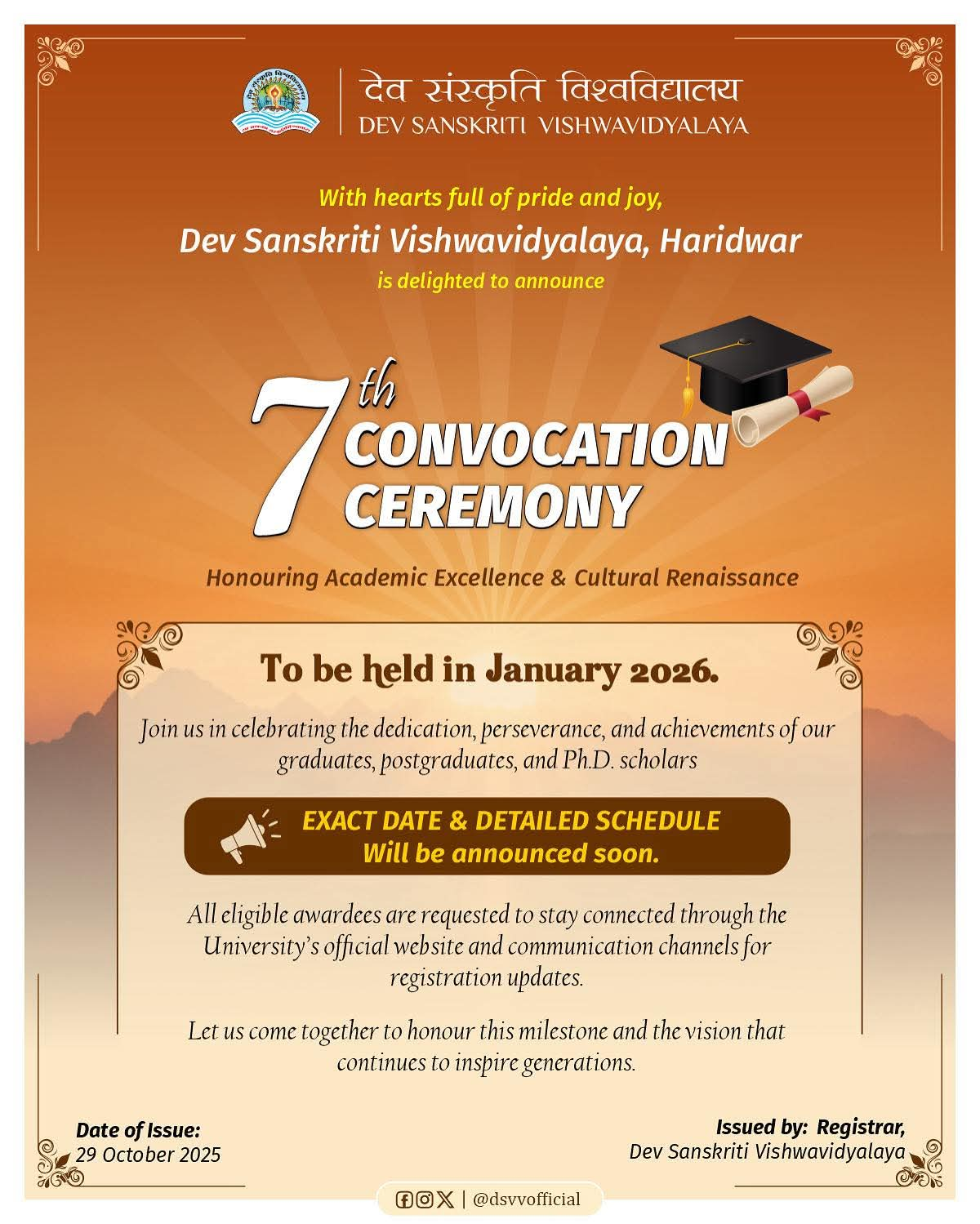1
NAAC CYCLE 2
1
Dev Sanskriti Vishwavidyalaya (DSVV), founded in 2002 in Haridwar, Uttarakhand, sits at the foothills of the Himalayas near the sacred Ganges. Inspired by Pandit Shriram Sharma Acharya Ji’s teachings, the university provides free education to deserving students through societal contributions. Graduates are encouraged to give back to society through mandatory social internships. DSVV blends ancient wisdom with modern education, promoting personal and intellectual growth.
The 76.80-acre campus, fully Wi-Fi enabled, features herbal gardens, an Acupressure Park, and cutting-edge infrastructure. DSVV hosts the prestigious International Festival on Yog, Culture, and Spirituality annually. The university offers diverse programs through its schools, including Indology, Humanities and Social Sciences, Technology, Communication and Management, and Biological Sciences and Sustainability. Subjects span from Animation and Media, Journalism, Computer Science, Yog, Holistic Health, History, Music, Tourism, Environmental Science, to Psychology. The institution integrates Eastern and Western spiritual practices to foster character development in its students.
DSVV partners with over 90 international institutions in countries like the USA, UK, Italy, Germany, Latvia, Lithuania, Poland, Japan, and Korea. It is a member of the Association of Commonwealth Universities and the Association of Indian Universities, hosting students from 14 countries. DSVV is home to Asia’s only Centre for Baltic Culture and Studies and the South Asian Institute of Peace and Reconciliation, both visited by India’s President and Vice President.
Honored with the Erasmus-Mundus scholarship, the university has hosted numerous dignitaries, with two of its five convocations presided over by Indian Presidents, including Hon. Ram Nath Kovind. Powered by the All World Gayatri Pariwar, an international socio-spiritual organization, DSVV is supported by over 150 million members across 40 countries and operates more than 4,000 social reform centers globally.
Vision:
The University, inspired by the teachings of Pt. Shriram Sharma Acharya, has structured its academic programs to ensure that the stated objectives are effectively achieved and applied with efficiency. Dev Sanskriti Vishwavidyalaya’s vision is to blend modern education with spiritual guidance, aiming to develop well-rounded, skilled, and spiritually uplifted graduates who have a strong scientific understanding of spiritual transformation and are motivated to contribute positively to society. The motto statement of the University is hence aptly framed as ‘A University for the Global Cultural & Spiritual Renaissance’.
[elementor-template id=”30880″]
[elementor-template id=”30185″]
[elementor-template id=”30243″]
[elementor-template id=”30251″]
[elementor-template id=”30228″]
[elementor-template id=”30255″]
[elementor-template id=”30264″]
[elementor-template id=”30270″]

